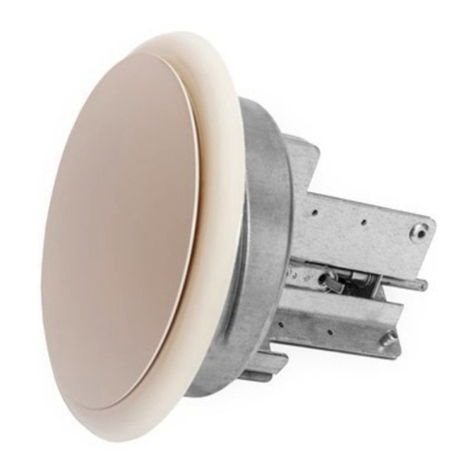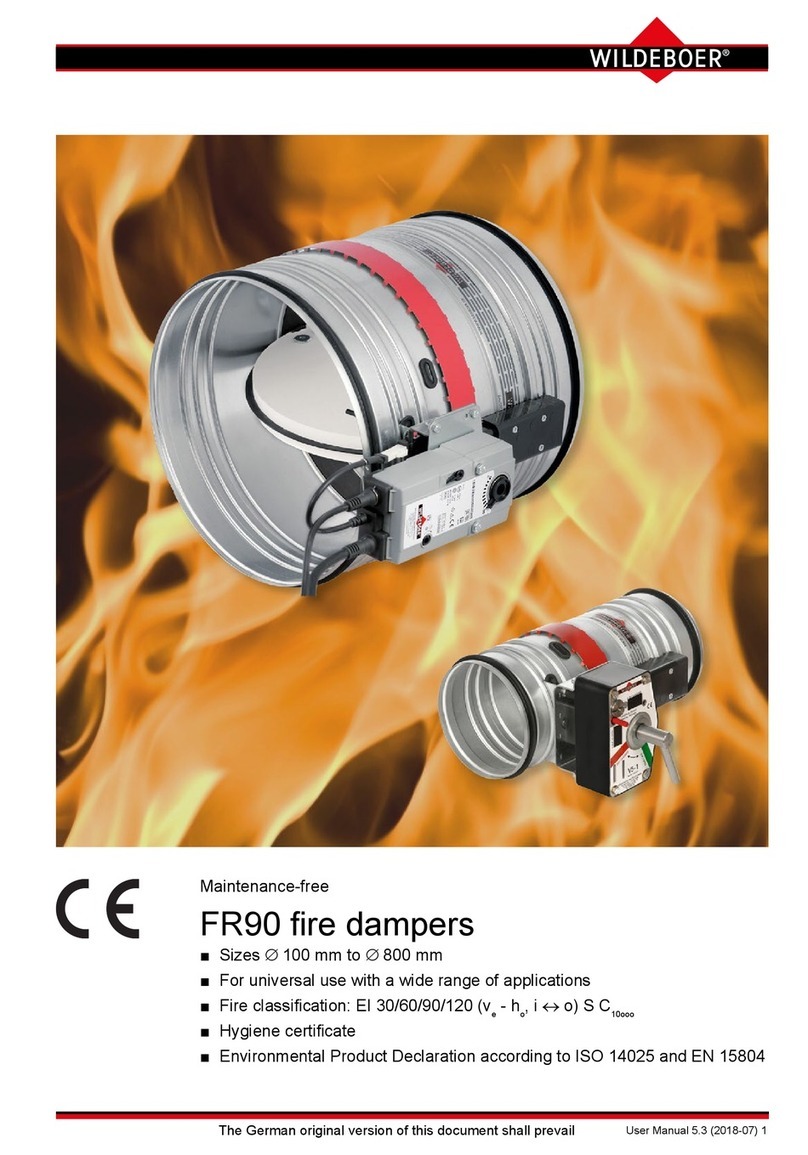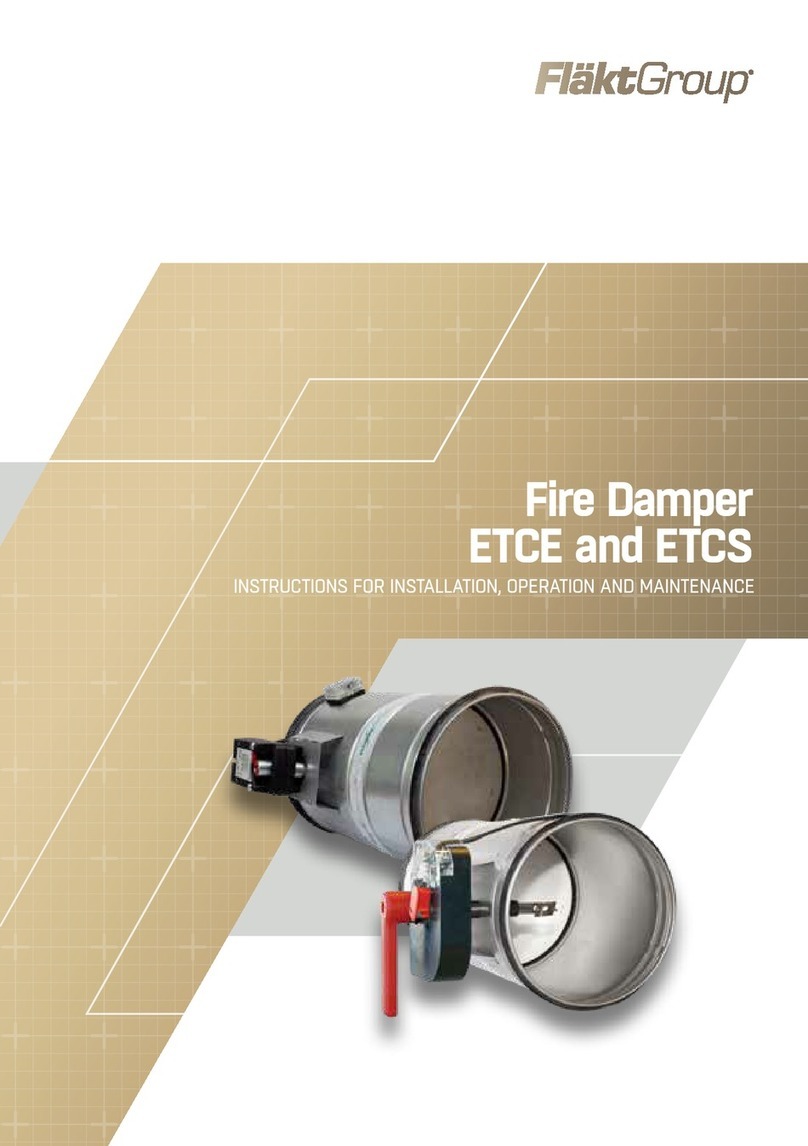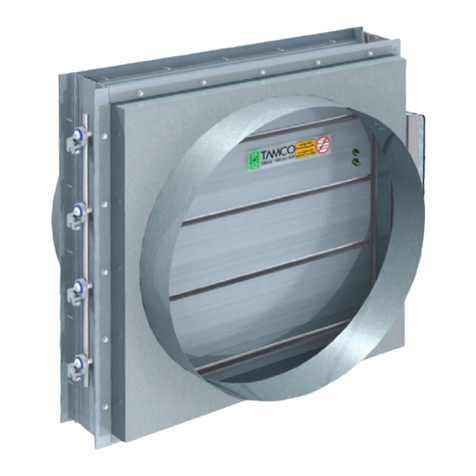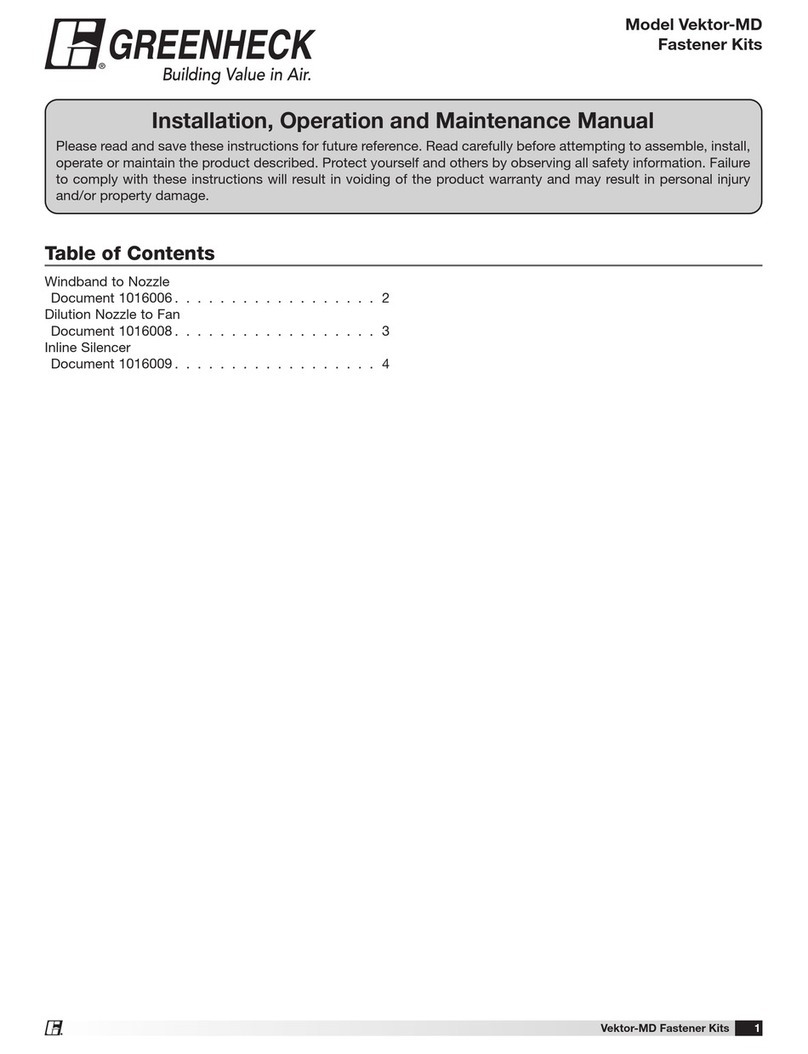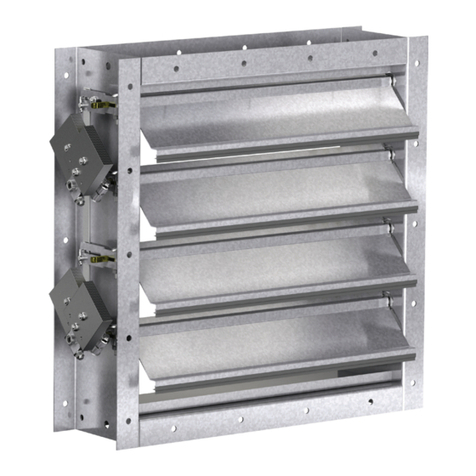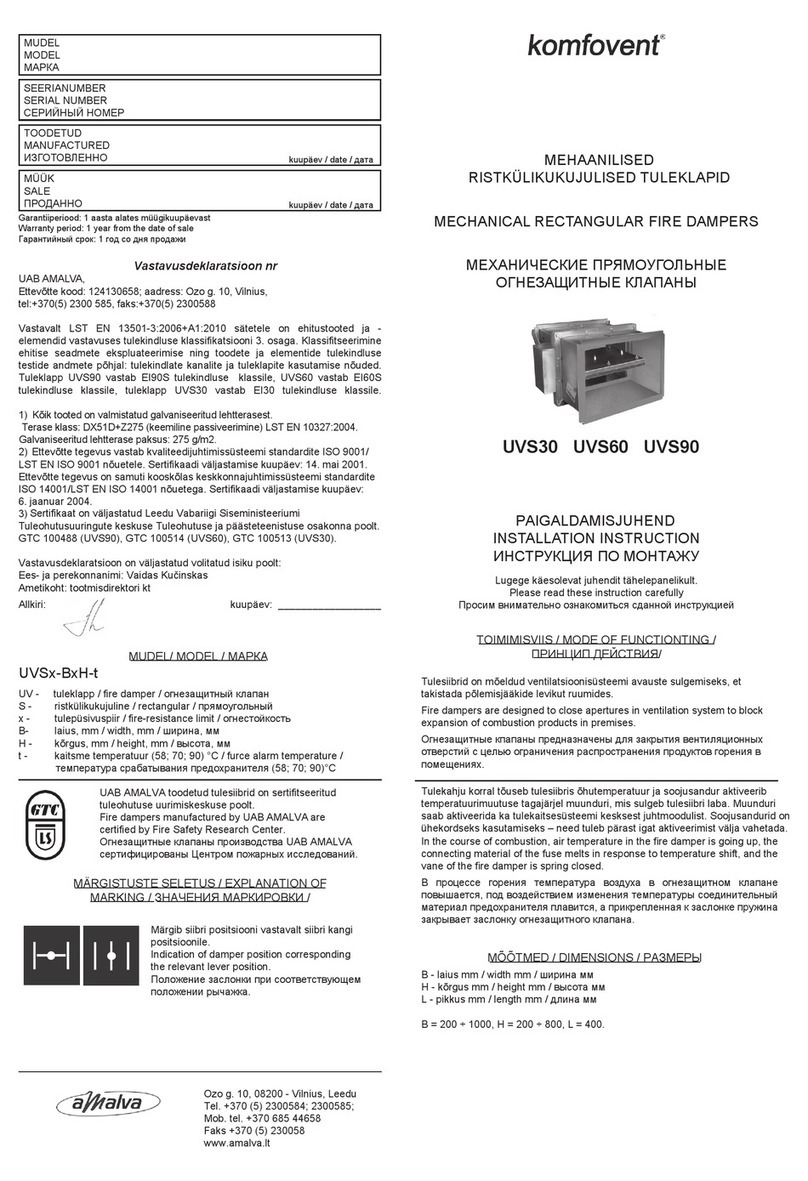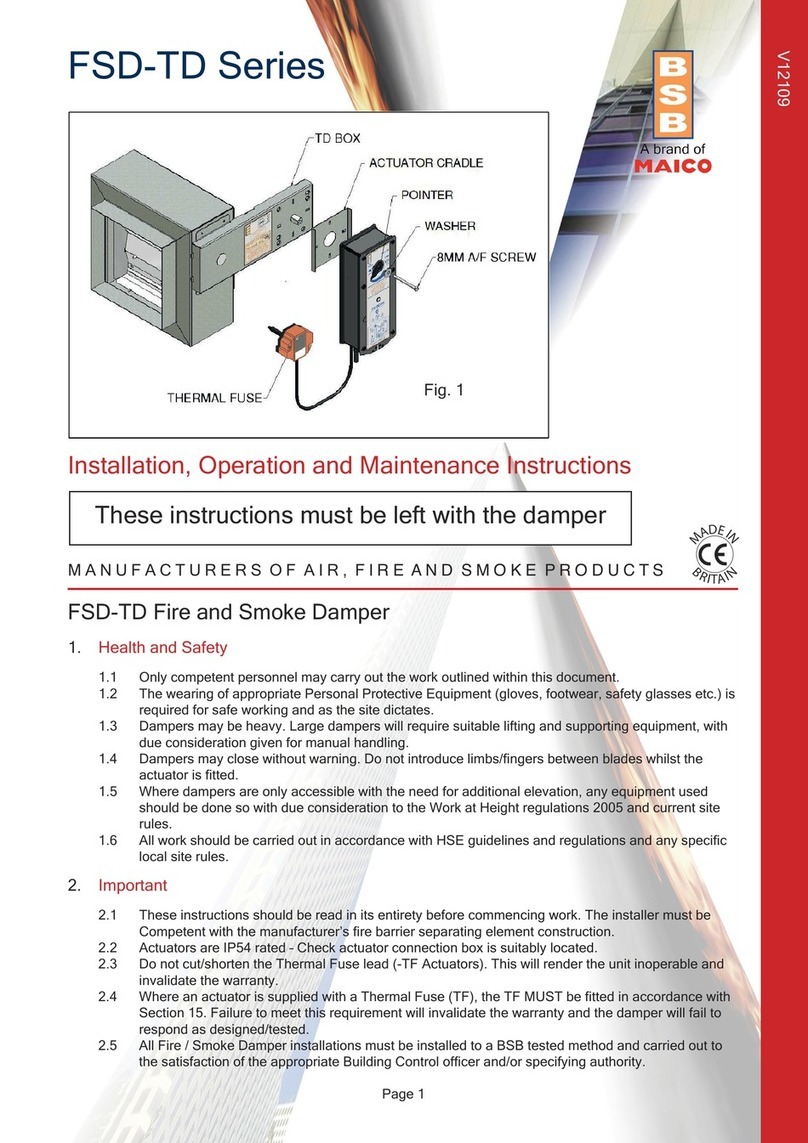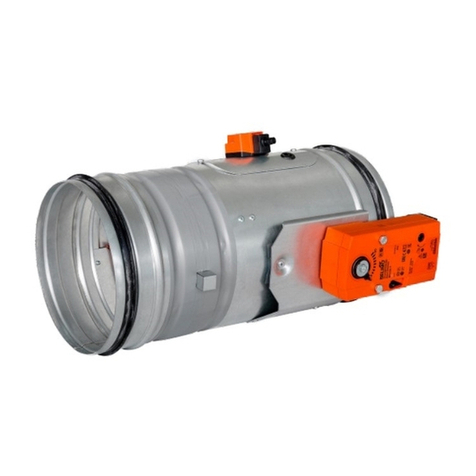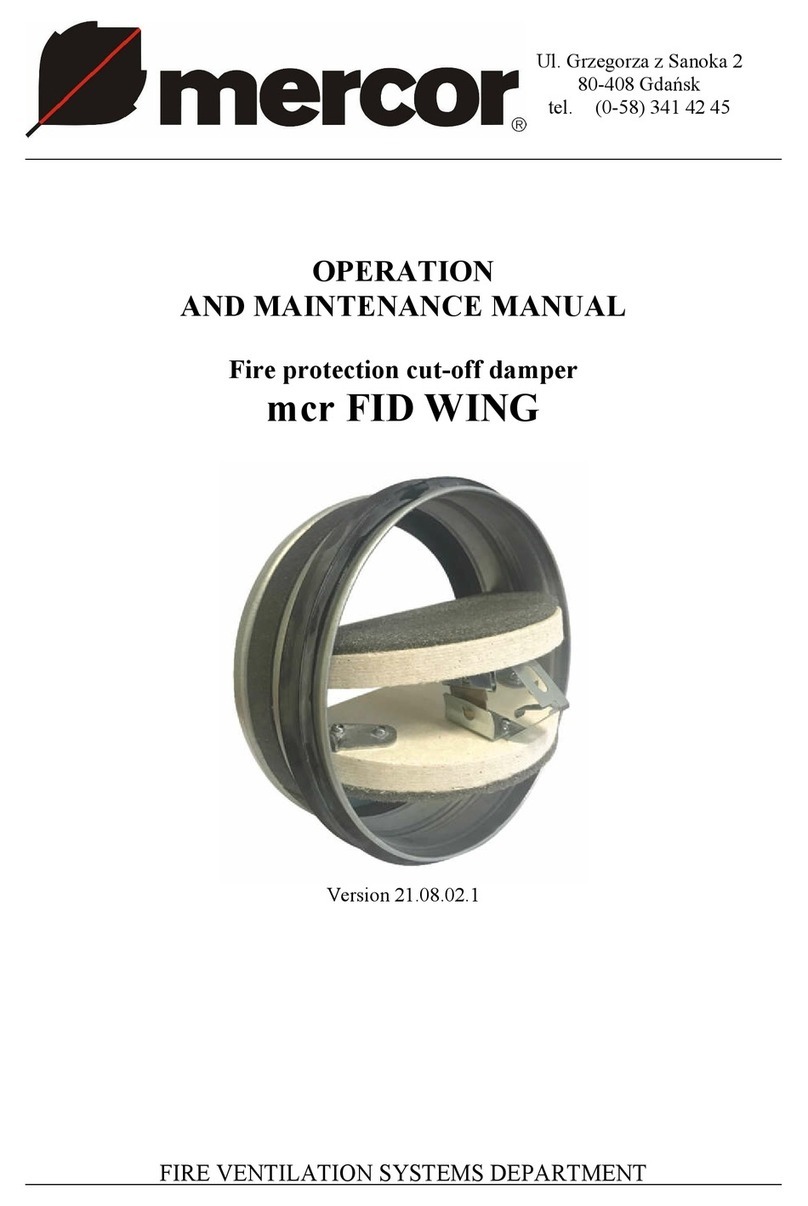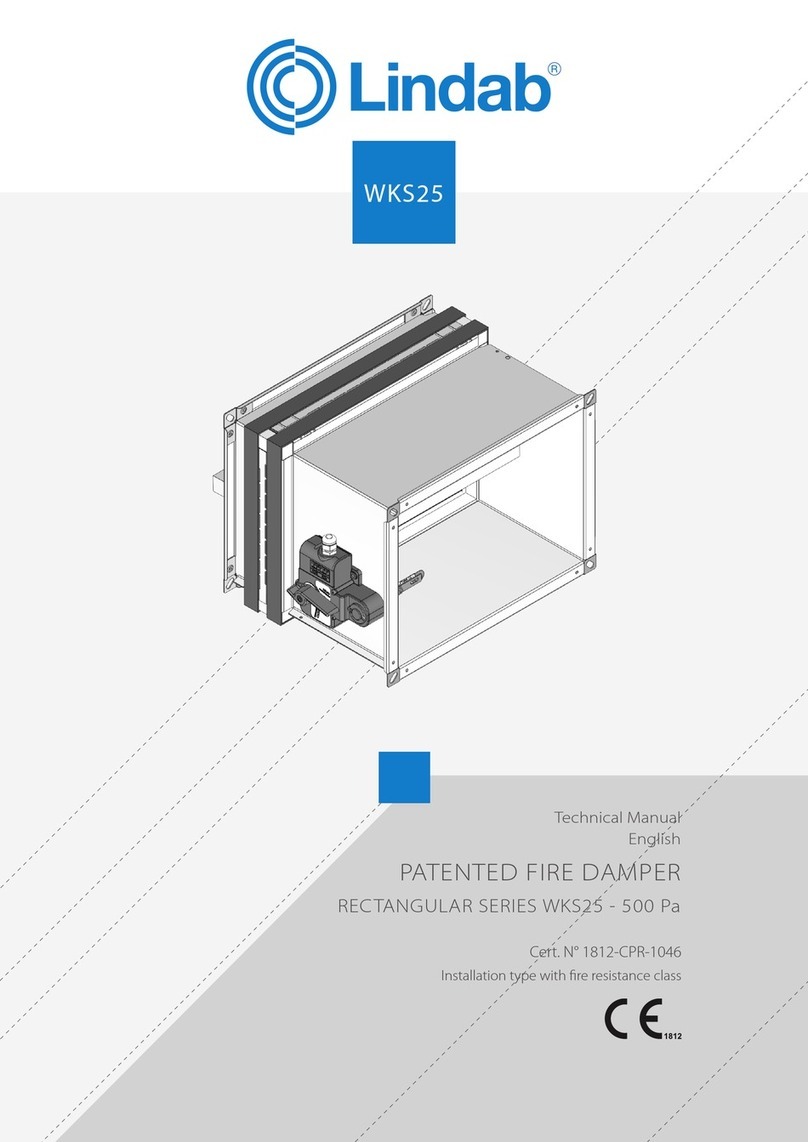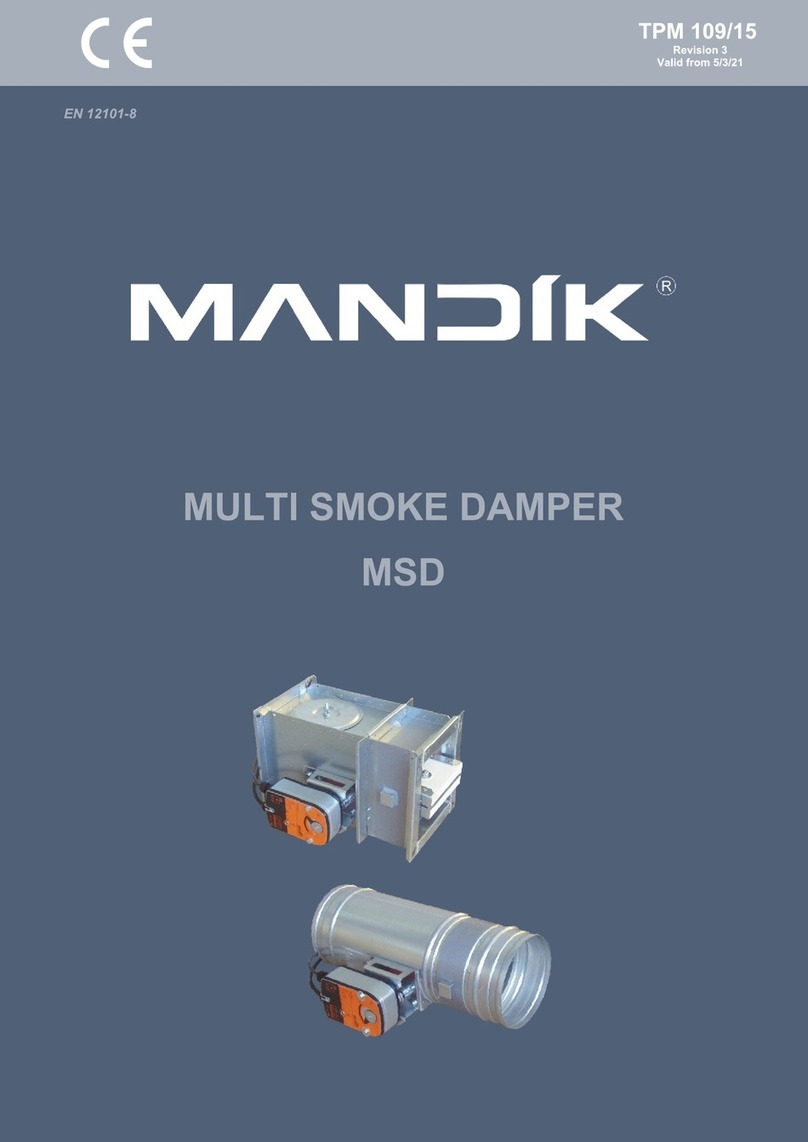
VC Damper
Installation, Operating and Maintenance Instructions
1
Health and Safety
1.1
Only competent personnel may carry out the work outlined within this document.
1.2
The wearing of appropriate Personal Protective Equipment (gloves, footwear,
safety glasses etc.) is required for safe working and as the site dictates.
1.3
Dampers may be heavy. Large dampers will require suitable lifting and
supporting equipment, with due consideration given for manual handling.
1.4
Dampers may close without warning. Do not introduce limbs/fingers in the path
of blade travel.
1.5
Where dampers are only accessible with the need for additional elevation, any
equipment used should be done so with due consideration to the Work at Height
regulations 2005 and current site rules.
1.6
All work should be carried out in accordance with HSE guidelines and regulations
and any specific local site rules.
2
Pre-Installation Notes
2.1
These instructions should be read in its entirely before installing or servicing this equipment. Improper
installation, alteration or lack of servicing/maintenance may impact on the correct product function and/or
warranty.
2.2 Ensure that all packing materials are removed, as failure to do so could result in permanent damage to
this product.
2.3 Check the damper schedules for damper size and locations within the building.
2.4 Inspect the dampers for damage and record where found.
2.5 Ensure that all dampers are installed within systems with airflows and pressures that do not exceed the
performance data within the BSB product literature.
2.6
Do not lift the damper by the blades. Dampers should be handled by the case only.
2.7 Mating ductwork connections must be square and should not deform the damper flange detail during
installation. Flanged dampers must be installed square without twisting to the mating duct flange.
2.8 Do not force the damper into position or use fixings to apply compression or stretching.
2.9 Ensure that the ductwork and damper flange or spigot are carefully matched, using the appropriate sealing material.
2.10
The damper must be protected from damp, dirt and other foreign material prior to and post installation
in readiness for hand over.
2.11
It is not recommended that dampers are painted or have a protective coating. Please refer to the BSB
sales office for advice.
2.12 Screws or fasteners must not penetrate the damper case where the linkage and blade bearings could
be impeded.
2.13 Care must be taken, that any installation material wet or dry does not come into contact with any
moving parts.
3 Equipment Required
3.1 Equipment and tools will vary dependent upon the construction element/application that the damper is being
installed within. Standard equipment that is normally used for ducted installations should suffice.
3.2 Access equipment as necessary
3.3 Temporary support equipment to retain damper in position whilst being installed.
4 Preparation for Installation
4.1 Before installation, the damper should be inspected to ensure that it has not been damaged and is in good
condition.
4.2 Check damper (label) reference, and damper size.
4.3 Check that the damper control will be accessible once installed.
4.4 Ensure damper blades are horizontal once installed unless otherwise specified and quoted for.
